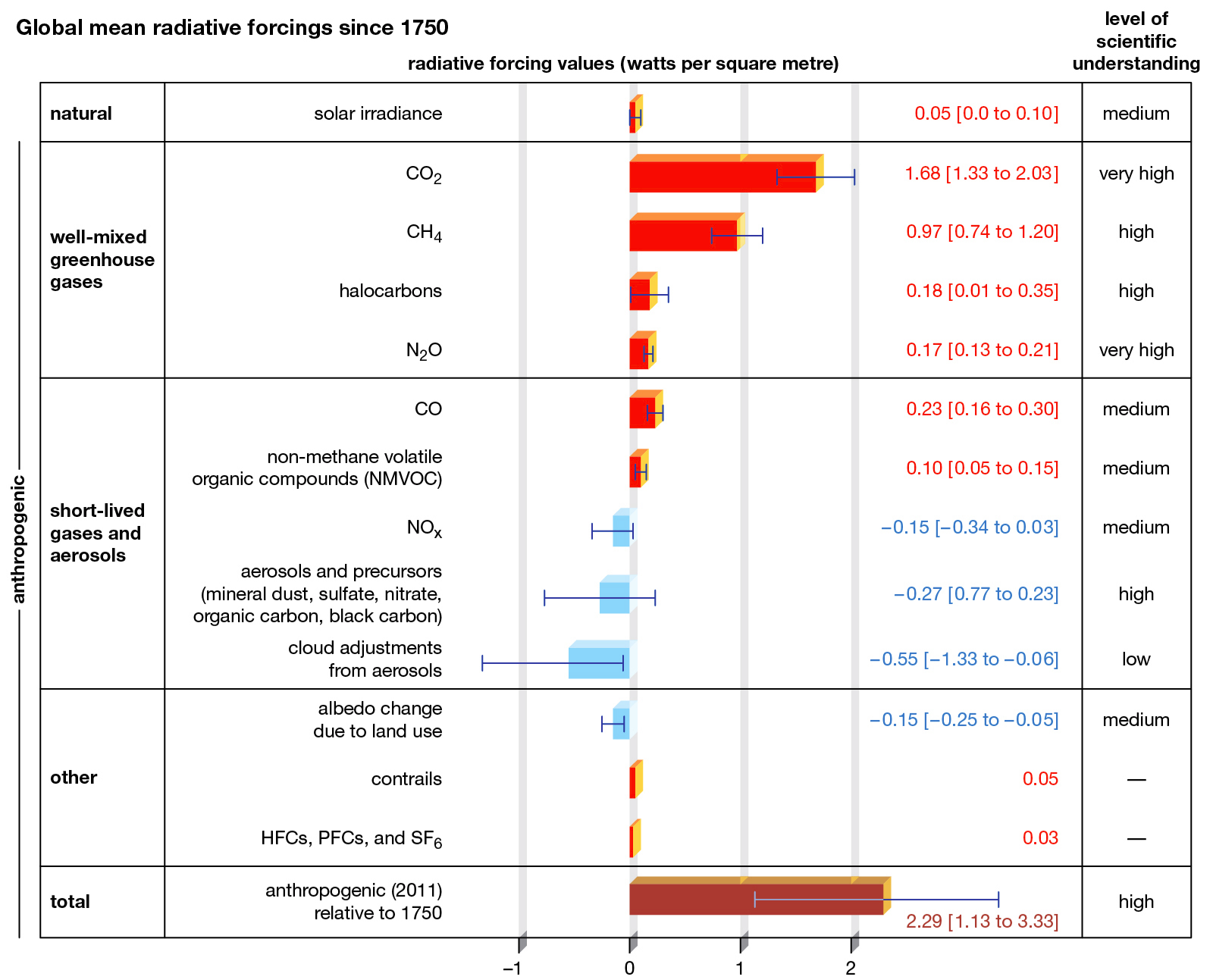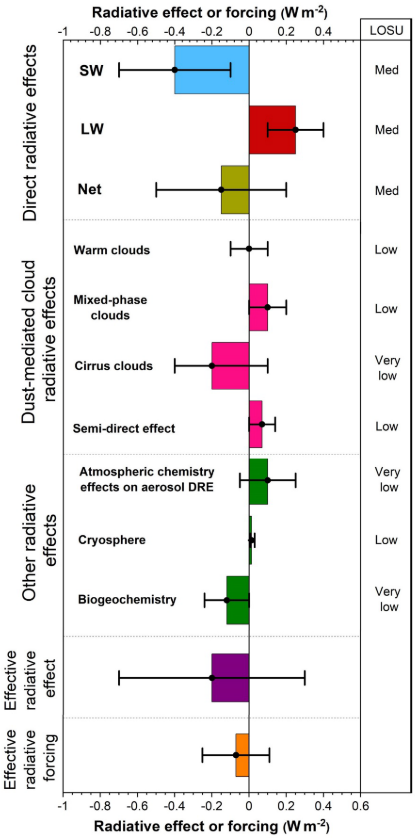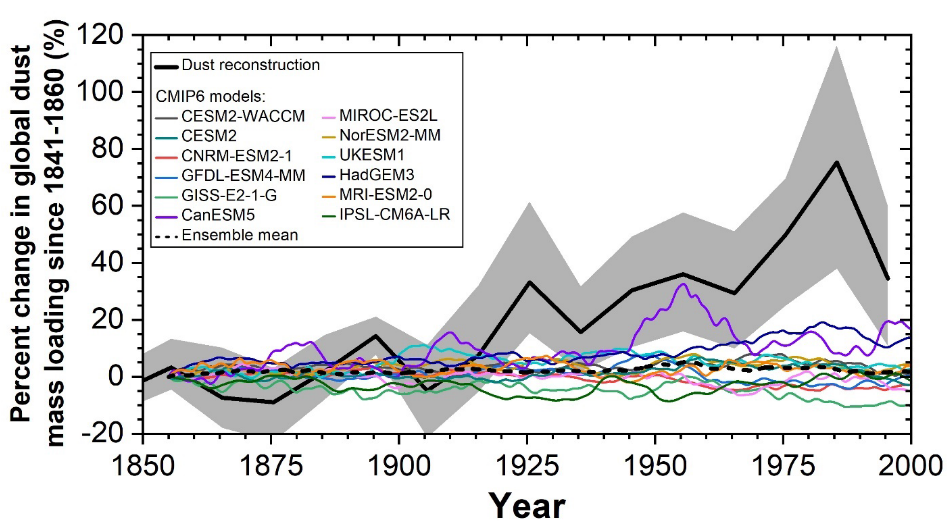The role of mineral dust aerosols on climate change
aerosol
Author: Rubén Soussé Villa is pursuing a PhD in atmospheric chemistry at Barcelona Supercompting Center / Universitat Politècnica de Catalunya

Mineral dust aerosols are microscopic rocky particles – for instance, sand – floating in the atmosphere. They are typically windblown from deserts, arid areas and agricultural lands, where they are produced from continued erosion of rocks by natural factors and human machinery.
Once in the air, dust can undergo many processes that might affect climate: Dust can absorb and reflect solar light, create or destroy clouds and react with gas species. Also, when dust particles deposit, they might have consequences on the region where they land. All these processes are very complex and still not well understood. That is the reason why, nowadays, the effect of dust on global climate is still one of the main climate unknowns.
Actually, dust’s radiative effect is a source of uncertainty. It means that, adding up all the processes where dust is involved, we do not know if dust contributes to cool or to warm the planet.
In fact, the IPCC reports 1 acknowledge this difficulty in climate change predictions (fig.1). And the problem is difficult to solve, because dust interaction with light, clouds and ecosystems depends on both, their characteristics and on dust grains properties: size, mineral composition, floating altitude and regions they cross 2.

As an extra challenge, computer climate models that perform climate change predictions have always assumed dust emissions to be constant in time. However, observational data from stations that collected deposited dust seems to indicate that the presence of dust in the atmosphere has increased since pre-industrial times. This is a similar drawback as the recent finding that also coarse dust particles are misrepresented in climate models.
To try to shed some light on the topic, recently Kok et al. published a review 3 summarizing all the interactions of dust aerosols in the atmosphere. It includes interactions with radiation, clouds, atmospheric gases, biogeochemistry and the cryosphere (ice regions). The contribution of each one of these processes to the total global radiative effect of dust is gathered from previous studies (fig.2), together with each process’ confidence level (i.e. the uncertainty).

In addition, combining 22 dust deposition measurement records, they quantify the dust aerosol load increase in the atmosphere from pre-industrial times (fig. 3), and how it affected in climate change.

With all this information, the review estimates a slight net cooling effect of dust aerosols on climate change. But the assumptions for each process are numerous, very numerous. And assumptions often translate into bigger uncertainties for the final estimate.
As an example, to understand the complexity of each process, let’s get deeper into the “simple” interaction of dust grains with light.
When light “hits” the surface of a dust particle, two things happen at the same time: a part of the light is reflected, leaving the atmosphere and hence cooling the planet, and the rest is absorbed by the dust particle that heats up, warming the atmosphere and eventually the planet.
So the warming/cooling effect of dust depends on the ratio of absorbed/reflected light, which depends on many factors. The most important one is dust particle size: The bigger dust grains are, the more absorption-to-reflection ratio they have, according to previous studies 4. So bigger dust aerosols, more warming effect. But also the minerals composing each dust grain play a role: For instance, iron oxide is an important radiation-absorbing agent. And its presence strongly depends on the location where the windblown dust comes from. Another aspect to consider is if dust is mixed with other aerosols, such as black carbon, a powerful radiation-absorbent agent originated from industrial activity and biomass burning. Finally, net light absorption/reflection ratio may not only depend on the actual dust grains characteristics, but also on the surface they are covering below them while floating in the air. It is not the same if grains block sunlight over a black ocean, preventing it from absorbing the incoming light, or over white ice, which would reflect all of it.
Overall, the global radiative effect from dust-light interaction alone yields to an uncertain number:– 0.15 ± 0.35 W/m2 . Since the uncertainty (second number) may lead to a negative radiative effect (cooling) or to a positive radiative effect (warming), it is unclear if interaction of dust with light alone helps or not in tackling climate change.
And if it is far away from simple, note that all the above considerations are for the interaction between light and unreacted dust. Since dust grains present a surface where surrounding gas molecules can condense or deposit, chemical reactions with gases will change dust characteristics and gas concentrations around dust grains, modifying the chemical composition of the atmosphere and therefore its transparency to radiation.
Another aspect is the interaction with clouds, that depend on dust grain size and on the type of clouds (low or high clouds, pure water, mixed water-ice or pure-ice clouds, etc.). It changes cloud formation, transport and temperature, affecting clouds’ light reflective effect.
When dust eventually deposits, it can still have consequences on climate. It depends, for example, if airborne dust lands on a bright-light-reflecting icy cap or in the ocean. Although ice surfaces reflect solar light back to outer space – like a mirror, cooling the planet – if dust particles land over them, dust will absorb this light, warming up and melting the surrounding ice. And eventually the ice cap will diminish or even disappear, causing the lost of these Earth’s natural “mirrors” that cool the planet. The seriousness of this effect depends again on many factors: The ice latitude and season (because of sunlight incoming angle), its snowpack type, the size and shape of snow grains… as well as dust concentration and characteristics. On the other hand, positive consequences for climate might also come from dust deposition: If dust falls over forests, it can provide phosphorus which enhance biomass production. This is what it’s thought to happen in the Amazon rainforest, with a net cooling effect because of the associated increased carbon capture. Finally, in the ocean things become complicated, since iron carried by dust increase phytoplankton productivity, which captures carbon, although toxic copper might cause phytoplankton population to plunge.
To sum up, today the overall radiative effect of dust in the atmosphere – accounting for all the above interactions with the Earth system – is estimated to be – 0.2 ± 0.5 W/m2. Which means that dust is either a very good climate cooler (– 0.7 W/m2, at its best), a neutral agent (0.0 W/m2) or a sinuous warmer (+0.3 W/m2).
If we consider the novel finding that dust atmospheric loading has increased in the last century, it results that since pre-industrial times dust aerosols helped to counteract global warming with a slightly-above-zero radiative effect. But the big uncertainty of this estimate brings us back to the above/below zero zone, causing its real effect to be still unclear. The study also annotates possible origins of this historical increase in dust aerosol. In fact – coincidentally or not – this increase is not geographically homogeneous: It matches pretty well those regions more impacted by humans. So maybe the expansion of agricultural areas, industrialized agriculture, the increase of inland water usage and its associated aridity are to be blamed.
Meanwhile, climate models still do not account for this increase in dust emissions in their future climate projections, neither for all the processes in which dust is involved in the atmosphere. And although the net effect of dust is still highly unpredictable, it is an important climate factor to be taken into account and studied in future climate models.
More on the subject:
What the invasion of Ukraine means for the IPCC’s latest climate change report
How to investigate the effect of climate change on multiple species without a mechanistic model
Geoengineering versus Global Warming
References
- Boucher, O., D. Randall, P. Artaxo, C. Bretherton, G. Feingold, P. Forster, V.-M. Kerminen, Y. Kondo, H. Liao, U. Lohmann, P. Rasch, S.K. Satheesh, S. Sherwood, B. Stevens and X.Y. Zhang (2013): Clouds and Aerosols. In: Climate Change 2013: The Physical Science Basis. Contribution of Working Group I to the Fifth Assessment Report of the Intergovernmental Panel on Climate Change [Stocker, T.F., D. Qin, G.-K. Plattner, M. Tignor, S.K. Allen, J. Boschung, A. Nauels, Y. Xia, V. Bex and P.M. Midgley (eds.)]. Cambridge University Press, Cambridge, United Kingdom and New York, NY, USA. ↩
- Claquin, T., Schulz, M., Balkanski, Y. & Boucher, O. (1998). Uncertainties in assessing radiative forcing by mineral dust. Tellus Ser. B-Chem. Phys. Meteorol. 50, 491-505, doi: 10.1034/j.1600-0889.1998.t01-2-00007.x ↩
- Adebiyi, A. A., & Kok, J. F. (2020). Climate models miss most of the coarse dust in the atmosphere. Science Advances, 6(15). doi: 10.1126/sciadv.aaz9507 ↩
- Kok, J.F., Storelvmo, T., Karydis, V.A., AdebiyiA.A., Mahowald N.M., Evan A.T., He C., Leung D.M. (2023). Mineral dust aerosol impacts on global climate and climate change. Nat Rev Earth Environ 4, 71–86. doi: 10.1038/s43017-022-00379-5 ↩